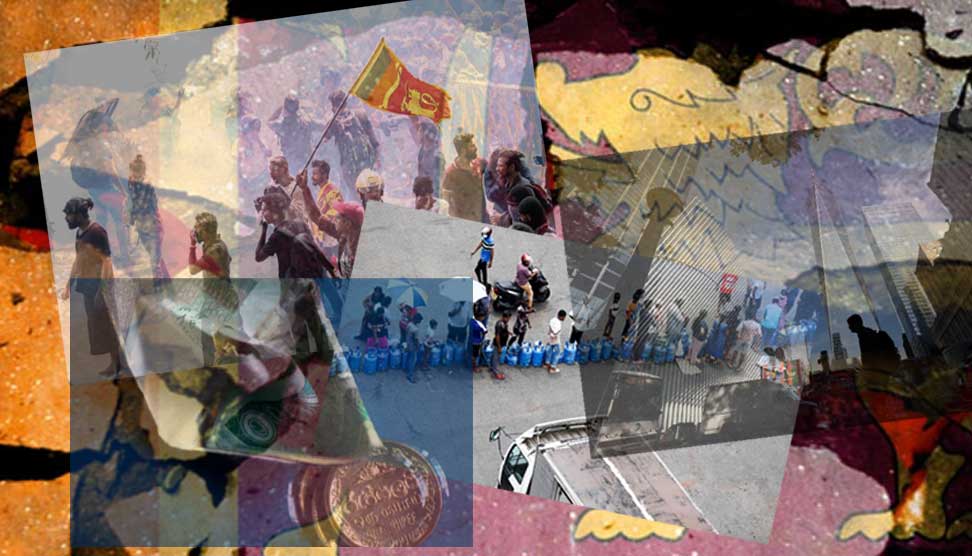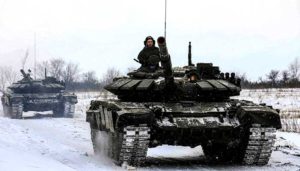The new world disorder
The causes of capitalism’s systemic crises do not lie in shortages or an inability to produce what humanity needs. The factories, their workforces, the means of production, logistics and communications, new and old, exist in abundance, as do the scientific and technological means to address pandemics and climate change. The social means for global planning already exist within the multinational corporations and the giant banks but are divided by private ownership and internecine competition. This contradiction was witnessed in the response to the pandemic: on the one hand the rapid development of vaccines, on the other the failure to distribute them equally to the populations of our planet. As of June 2023, 29.9% of them have yet to receive a single jab.
The fundamental cause of the system’s crisis lies in the massive overaccumulation of capital, unable to realise sufficient profits from production at the same or greater rate than in the boom phase of globalisation. Hence the fact that the ‘recovery’ after the last recession rapidly ran out of steam and gave way to stagnation in large parts of the world economy. The failure to solve this problem after the Great Recession, in the only way it is ever solved by capitalists, by wholesale destruction of capital, now threatens the mass bankruptcy of so-called zombie companies, estimated to account for as many as 16% to 20% of all firms in the US.
Because this would mean the destruction of large sectors of industry or commerce, this is a last resort and risky option for capital. In 2008 it would have hit the commanding heights of financial capital, the banks, the home mortgage companies, and multinational automotive manufacturers, like GM and Chrysler, that were judged ‘too big to fail’. Many were saved at the expense of the working and middle class taxpayers. The Federal Reserve also led the world into an enormous increase in the money supply (Quantitative Easing) allowing companies, states, and individuals to pile up even more debt and laying the basis for a future collapse.
The solution dictated by neoliberal and monetarist theory, the gigantic destruction of capital to restore profit rates, can only come at enormous cost to the workers of the world. Of course, the answer is to fight back, to resist closures and mass unemployment, but major concessions from the employers would not mark a return to the status quo ante, but rather deepen the chaos. This, in turn, poses the need to take control of production into the hands of those who do the work, and state power into the hands of the working many, not the exploiting few. This can only be done on the road of revolution—destroying the state power of the capitalist class—not on the road of reform.
Globalisation proved to be temporary fix for capitalism. It certainly saw a huge increase in the degree of international integration between the major centres of capital accumulation, under the hegemony of the United States and its international financial institutions, the IMF, World Bank, World Trade Organisation. It was based in important measure on a benevolent symbiosis of the US and the EU with China both as market for advanced technology and the new manufacturing workshop of the world. Yet, in the epoch of capitalism’s full maturity, indeed its over-maturity, the epoch of imperialism, a rapidly growing new capitalist power like China had either to be subordinated to the existing hegemonic world power, becoming what Marxists call a semi-colony, or itself become an imperialist ‘great power’.
China’s readiness for elevation into the exclusive club of the imperialist powers could be seen after 2008 when it played a major role in dragging the world economy out of the Great Recession. But then it began to expand globally as an investor in regions hitherto dominated by the old imperialisms of North America, Western Europe and East Asia. Inevitably, this led to sharpened rivalry and conflict between the old and the new powers. The Chinese Communist Party’s ability to threaten Tiananmen-style repression and Xi Jinping’s introduction of a mass surveillance state is rooted in the Chinese population’s rise out of poverty, and the country’s role as the second most powerful economy in the world. Any serious or prolonged retreat from this prosperity, caused by economic downturn or military adventures, will undermine it and bring with it the spectre of revolution.
By contrast, Russia’s ability to escape the fate of subordination to the US superpower was based on rent from its abundant natural resources, rather than industrial growth. During its ‘shock therapy’ introduction to capitalism, its economy contracted by 40 per cent as inflation skyrocketed. Shortages of the most basic food items became the norm, and a third of the population fell into poverty. The Soviet era social protections were decimated. When Yeltsin took Russia into the IMF in 1992, a series of loans with harsh conditions (cuts in welfare, education, etc.) accelerated the downward lurch.
Putin’s popularity was not, at least initially, the product of brutally suppressing opposition. After 2000, he was able to curb the oligarchs’ shameless plundering of the economy and siphoning of wealth into Western banks and tax havens. By taking control of the oil and gas corporations Lukoil, Rosneft, etc. he halted the economic decline and modestly restored living standards. But he was repeatedly rebuffed in his attempts to get the West to recognise a sphere of influence for Russia in the states of the former USSR and those in Africa and the Middle East that had formerly enjoyed close relations with the USSR. In 2005 he denounced the collapse of the Soviet Union (in which he played a junior role) as ‘the greatest geopolitical catastrophe of the century’ and a ‘genuine tragedy’ for the Russian people as ‘tens of millions’ of them found themselves outside of Russian territory.
Today, Russia is economically no equal to China. It is not even among the ten largest economies; its GDP of $1.4 trillion is dwarfed by that of the United States ($20 trillion) and China ($14 trillion). It is roughly equal to that of Brazil but below India’s and even South Korea’s. Its technological strengths lie in space research, nuclear energy, and military hardware. But, though an economic dwarf, it remains a military giant, second to the US in global firepower and, prior to the Ukraine war at least, in military capability. This has been the basis of Putin’s ability to act as disturber of the peace in the Middle East and Africa and in Russia’s near abroad.
The European Union’s two dominant economies, Germany and France, have long sought to increase the bloc’s independence relative to the USA and to establish Europe as a world competitor to Chinese and US capital. A series of shifts in the international dynamic, beginning with Barack Obama’s pivot to Asia, the exit of the US’s closest ally from the bloc, the fostering of closer links with Eurasia through oil and gas trade and China’s belt and road initiative, seemed to favour an increasingly independent role for a European imperialism. But at a stroke, the Ukraine war has restored US dominance of the continent and scuppered the plans of Paris and Berlin.
Despite the departure of the UK, the EU remains one of the three great blocs of capital. While the productive forces of European capitalism have long outgrown the state borders of its nations, the prolonged crisis that has afflicted the union since 2008 shows that the capitalist classes of Europe are unable to perform the historically progressive task of unifying the continent.
The European Union, with its Treaties, its Commission, its European Central Bank and its currency, is a coercive apparatus of exploitation of the periphery by the imperialist core. It bludgeoned the southern European states into savage austerity to protect the imperialist financiers, provides a reservoir of material and diplomatic aid for the adventures of US imperialism, and conducts its affairs behind the ramparts of Nato and Fortress Europe. This imperialist architecture cannot be refashioned to serve social ends: it must be abolished through a socialist revolution culminating in a socialist united states of Europe.
However, revolutionary communists have always rejected the illusion that the road to unification on a higher, democratic, socialist basis, necessarily lies through the dismantling of large-scale political or economic units into their constituent parts. Rather, we seek to socialise and plan them in a way that takes humanity forward. Socialism requires a continental, indeed a global, scale of integrated production. The perspective of socialism in one country is even more reactionary now than it was when Stalin proclaimed it a century ago.
Cramping the productive forces back into 28 national states, re-imposing border controls and customs barriers, severing ties of economic and cultural exchange, impeding the development of the productive forces, increasing interstate rivalries, dividing yet further the working classes of these states in the name of a bogus economic sovereignty, can only foster national antagonism, economic decline, and, ultimately, the resort to imperialist war.
The task of unifying Europe, recognised as necessary by communists over a century ago before the carnage of two world wars, falls to the working class if it to avoid a third. The means by which it can achieve this is the Europe-wide revolution. Starting from today’s struggles against austerity, privatisation, war, inequality, racism and environmental destruction, Europe’s workers have to unite their struggles and give them a common objective—socialism on a continental scale.
In the Global South, the illusion that the advanced semi-colonial countries were treading the Chinese path to development has been dealt a death blow. In the high period of globalisation, many were touted ‘emerging economies’ destined for sustained development—the Asian tigers, the BRICS, and Mexico, Indonesia, Nigeria and Turkey. The G20 group was founded out of this optimism in 2003. But over the next two decades, with the exception of Russia and China, none of these countries escaped imperialist domination.
The situation of the weaker semi-colonies was cruelly exposed in the aftermath of the 2008 crisis. The dollar flight exposed high debt levels; cuts to food and fuel subsidies imposed by creditors sparked the chain of events culminating in the Arab Spring.
The aftermath of imperialist misadventures in Iraq and Afghanistan (and subsequently in Syria and Ukraine) has added to the peoples’ impoverishment and lack of security. Resistance to the re-imposition of even harsher authoritarian regimes, in Algeria, Sudan and Rojava, has often seen the working class take a prominent, but not decisive role; nowhere have they toppled the regimes.
Across sub-Saharan Africa, the UK and France maintain their spheres of influence over their former colonial possessions, with a greater or lesser degree of overtness. While France still exercises control over the monetary policies of CFA countries, its ability to prop up or replace regimes is increasingly challenged by the resort to protection from Russian proxies. The flood of heavily armed Islamist “terrorists” across the Sahel region was in large measure the result of the US intervention in Libya, though it is also linked to the region’s advancing desertification, a product of climate change, which set pastoralist against farming communities.
In Latin America, economies wracked by inflation, unemployment and debt bondage have prompted reformist challenges to some of the right wing governments, but everywhere the challengers have proved unwilling to lead the workers and the rural and urban poor against the elite. Coups and counter-revolutionary movements have been the price.
The European Union absorbed 13 countries, including most of the former Eastern Bloc, during the 2000s. In all cases, these countries have been tied to the imperialist needs of Germany and to a lesser extent France and Italy as a source of cheap labour and site for super-profits reaped by outsourcing. Authoritarian governments tend to sit on this powder keg with a mixture of right wing nationalism and neoliberal ‘growth’.
The semi-colonial chafing at the western-dominated imperialist order has been adroitly exploited by China through so-called ‘debt diplomacy’ offering loans without the strings of human rights conditions. But as Sri Lanka shows, exchanging one imperialist loan shark for another has neither shielded them from the ravages of the international markets, nor prevented their new creditor asserting its property rights over its investments.
- How do we consider the socio economics crisis in Sri Lanka in the world contest - October 18, 2023
- The Global Outlook - December 29, 2022





